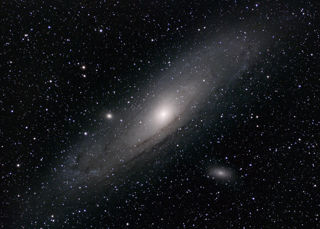
Io Scale Model
Io Scale Model
Scale model of Jupiter’s moon Io. It is a 1:7,000,000 scale model, based on an estimate of Io’s diameter to be 3,660 kilometres. Io was first discovered by Italian astronomer Galileo Galilei and is one of Jupiter's four largest moons. Named after their discoverer, the Galilean moons consist of Ganymede, Callisto, Io and Europa in descending size order.Io is the most volcanic body in the solar system and this intensive activity has caused the colourful chaotic appearance of its surface. Io completes an orbit of Jupiter every 42.5 hours and is the closest of the four Galilean moons to the gas giant. This proximity to the Solar System’s largest planet, along with the impact of the other Galilean moons, means that Io is under huge gravitational stresses. As Jupiter's gravity pulls on the near face of Io, the other Galilean moons pull it in other directions. The result is that Io's shape is distorted. Io's orbit is also distorted and highly eccentric as a result, which in turn means that Io's shape is constantly changing. All of this distortion leads to a lot of friction in Io, causing a great deal of heat which drives the volcanic activity on the surface - a process known as tidal heating. This theory of why Io has so many volcanoes is widely accepted, but recent scientific investigation has raised a few anomalies as to how the volcanoes are distributed across the surface. Other theories have sought to account for the anomalies, such as the idea that Io also has an ocean of molten rock under its surface - producing extra heat from this magma ocean, as its mix of molten and solid rock flows and rubs against other rocks.
Io's volcanoes - some of which are taller than Mount Everest - are so active that the surface of the moon undergoes constant change. When Voyager 1 sent back its first images of Io scientists were expecting to see lots of impact craters, like those seen on the surface of the Earth's Moon. Instead the surface was largely smooth, with volcanoes, mountains, lava flows and pits. The volcanic activity buries craters after they are produced by meteorite strikes, and therefore the surface of Io is considered geologically young. The unusual colouring of the surface - as depicted on the high-fidelity model - is a result of sulfurous compounds deposited by the volcanic activity.
All images:
-
![Scale model of Jupiter's moon Io]()
Scale model of Jupiter's moon Io -
![Scale model of Jupiter's moon Io]()
Scale model of Jupiter's moon Io -
![Scale model of Jupiter's moon Io]()
Scale model of Jupiter's moon Io -
![Scale model of Jupiter's moon Io]()
Scale model of Jupiter's moon Io -
![Scale model of Jupiter's moon Io, alongside the other three Galilean moon models]()
Scale model of Jupiter's moon Io, alongside the other three Galilean moon models -
![True colour image of Io - Credit: NASA/JPL/University of Arizona]()
True colour image of Io - Credit: NASA/JPL/University of Arizona -
![The Galileo Manuscript - Draft of a letter to Leonardo Donato, Doge of Venice, August 1609, and Notes on the Moons of Jupiter, January 1610. At the bottom of the letter diagrams drawn by Galileo record the position of Jupiter's moons - Credit: Regents of the University of Michigan]()
The Galileo Manuscript - Draft of a letter to Leonardo Donato, Doge of Venice, August 1609, and Notes on the Moons of Jupiter, January 1610. At the bottom of the letter diagrams drawn by Galileo record the position of Jupiter's moons - Credit: Regents of the University of Michigan -
![The four Galilean moons - Credit: NASA/JPL]()
The four Galilean moons - Credit: NASA/JPL -
![Composite image of Jupiter and Io made from data sent back by the New Horizons mission, from its 2007 fly-by - Credit: NASA/Johns Hopkins University Applied Physics Laboratory/Southwest Research Institute/Goddard Space Flight Center]()
Composite image of Jupiter and Io made from data sent back by the New Horizons mission, from its 2007 fly-by - Credit: NASA/Johns Hopkins University Applied Physics Laboratory/Southwest Research Institute/Goddard Space Flight Center -
![Sent back by the New Horizons mission's fly-by of Jupiter in 2007, this image shows an eruption by the Tvashtar Paterae volcanic region on Io - Credit: NASA/Johns Hopkins University Applied Physics Laboratory/Southwest Research Institute]()
Sent back by the New Horizons mission's fly-by of Jupiter in 2007, this image shows an eruption by the Tvashtar Paterae volcanic region on Io - Credit: NASA/Johns Hopkins University Applied Physics Laboratory/Southwest Research Institute
More information
Object number
2001-11
Location
Our Solar System Gallery
Has this object been into space?
No
Dimension - Dimension, Value, Measurement unit
Diameter: 50.0cm
Object Production Date
2001
Object Production Organisation
P & P Projects
Object Production Place
Netherlands
On Display Status
On display
Copyright and Photos
Photography is shared via the license below.
However, some objects on this website are on loan to the National Space Centre and are being shared through the permission of their owners.
Commercial use of images from this website is not allowed without additional permissions being granted. To request permission to use images for purposes not covered in the license below, please contact [email protected]
Individual objects on loan to the National Space Centre may have additional copyright permissions, so advice should always be sought before use.
![]()
This work is licensed under a Creative Commons Attribution-NonCommercial 4.0 International License.











